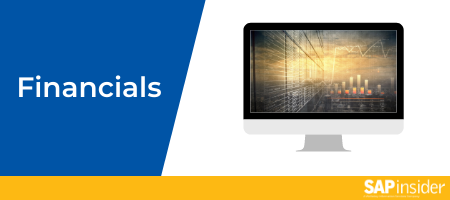Understanding Tariffs and Pricing: Preparing for 2025
Meet the Authors
Key Takeaways
Businesses must adopt dynamic pricing strategies and optimize supply chains to navigate increasing tariffs and remain competitive in a volatile market.
Utilizing rebates and trade incentives can help companies offset tariff costs without raising prices, thereby maintaining profitability and customer loyalty.
Real-time data and analytics are essential for effective pricing execution and adjusting to market changes, enabling businesses to monitor costs and adapt strategies swiftly.
As global trade tensions rise and tariffs become a reality, businesses face mounting pressure to adjust their pricing strategies to remain competitive. In 2025, tariffs on essentials like eggs and coffee are expected to increase, creating price volatility and challenging supply chain stability. To navigate these changes, businesses need to adopt dynamic pricing strategies, enhance supply chain resilience, and leverage rebates and trade agreements to offset costs and maintain profitability.
How Tariffs Affect Supply Chains
Tariffs increase the cost of imported goods, which can disrupt supply chains and create price instability. Businesses need to rethink their supplier relationships and logistics strategies to minimize exposure to tariff-driven costs.
- Supplier Diversification – Relying on a single supplier in a tariff-affected region increases risk. Exploring alternative suppliers in low-tariff or tariff-free countries can reduce dependency and mitigate cost increases.
- Cost Absorption vs. Price Increases – Businesses need to decide whether to absorb tariff-related costs or pass them on to consumers. Striking the right balance is crucial for maintaining customer loyalty while protecting profit margins.
- Inventory and Logistics Adjustments – Companies may need to reevaluate stock levels and adjust distribution strategies to minimize tariff impact.
- Manufacturing Relocation – Moving production to lower-tariff regions can help reduce overall costs and improve supply chain efficiency.
Using Rebates and Trade Incentives to Offset Costs
To help companies offset the effects of tariffs, Flintfox shared strategies they can use to protect their bottom lines. Rebates and trade incentives can help businesses recover costs from tariffs without raising prices. Effective rebate management allows businesses to:
Explore related questions
- Optimize Supplier and Distributor Agreements – Understanding the full scope of rebate opportunities within trade agreements can help offset tariff costs.
- Increase Profitability Without Raising Prices – Rebates can help businesses recover margins without passing costs to consumers.
- Ensure Compliance and Accuracy – Automated rebate tracking ensures that companies receive entitled rebates and avoid manual errors.
- Leverage Government-Backed Rebate Programs – Programs like the U.S. Duty Drawback Program and Canada’s Duty Relief and Drawback Programs allow businesses to claim refunds on tariffs paid for imported goods that are later exported.
Pricing Strategies to Manage Tariff Impacts
When tariffs increase costs, adopting the right pricing strategy is critical to maintaining profitability and customer satisfaction.
- Dynamic Pricing – Adjust prices in real time based on market demand, competitor activity, and cost fluctuations. AI-powered pricing engines can help businesses respond instantly to market shifts.
- Cost-Plus Pricing – Maintain predictable profitability by pricing products based on production costs plus a fixed margin. This strategy is useful in industries with stable but gradually increasing costs.
- Value-Based Pricing – Set prices based on customer-perceived value rather than production cost alone. This allows premium brands to maintain pricing power even when costs rise.
- Price Skimming – Set high initial prices for new products and gradually lower them over time as market competition increases.
- Promotions and Discounts – Temporary pricing strategies, such as bundling and limited-time discounts, can help businesses offset short-term tariff impacts while maintaining customer loyalty.
Consumer Behavior and Market Response
Understanding how customers respond to price changes is critical to adjusting pricing strategies effectively:
- Luxury vs. Essentials – While price increases on luxury goods may have minimal impact on demand, essential goods like groceries are more sensitive to price changes.
- Brand Switching and Substitutes – Price-conscious consumers may switch to cheaper alternatives when prices rise, particularly in commodity markets.
- Elasticity of Demand – Products with high elasticity (e.g., electronics) will see demand drop with higher prices, while inelastic products (e.g., medication) will maintain steady demand.
- Perception of Fair Pricing – Communicating price increases transparently helps retain customer trust and brand loyalty.
Leveraging Real-Time Analytics for Pricing Execution
Real-time data and analytics are essential for executing pricing strategies effectively in a tariff-driven market. Businesses can:
- Monitor Cost Changes Instantly – Adjust pricing strategies based on real-time updates on tariff rates and supplier costs.
- Analyze Competitive Pricing – Track competitor prices and market conditions to stay competitive.
- Automate Pricing Adjustments – AI-powered engines can dynamically adjust prices based on shifting market conditions.
- Improve Forecasting and Scenario Planning – Simulate potential tariff changes and test pricing strategies to prepare for future market shifts.
What This Means for SAPinsiders
Adjust to the new trade landscape with technology. Tariffs will continue to shape global trade dynamics in 2025 and beyond. Businesses that proactively adjust pricing strategies, optimize supply chains, and leverage trade agreements will gain a competitive edge. Real-time analytics, AI-powered pricing engines, and automated rebate tracking will be essential tools for maintaining profitability and customer satisfaction in a volatile economic environment.
Understand your options to offset issues. Companies should be aware that they have multiple options to offset the impact of tariffs. Working with partners like Flintfox allows them to explore these strategies to find the best one for their needs.
Companies should keep current with demand. Organizations should maintain a close watch on the market and consumer behavior so they can tailor pricing and solutions. This provides a competitive advantage and an enhanced customer experience, which can build customer loyalty even in the face of tariffs.






